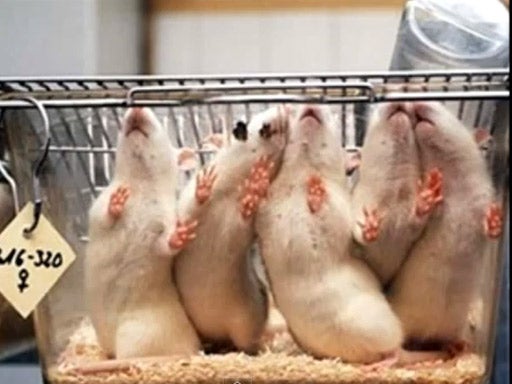Children lured to watch animal cruelty online
Violent internet film postings often disguised to lure in innocent youngsters, survey says

Your support helps us to tell the story
From reproductive rights to climate change to Big Tech, The Independent is on the ground when the story is developing. Whether it's investigating the financials of Elon Musk's pro-Trump PAC or producing our latest documentary, 'The A Word', which shines a light on the American women fighting for reproductive rights, we know how important it is to parse out the facts from the messaging.
At such a critical moment in US history, we need reporters on the ground. Your donation allows us to keep sending journalists to speak to both sides of the story.
The Independent is trusted by Americans across the entire political spectrum. And unlike many other quality news outlets, we choose not to lock Americans out of our reporting and analysis with paywalls. We believe quality journalism should be available to everyone, paid for by those who can afford it.
Your support makes all the difference.More than a quarter of British children have seen distressing videos of animal cruelty online, according to research that reveals how little parents know about their offspring’s internet habits. The figure means animal-harm videos are now the most commonly viewed inappropriate content by under-16s.
Two thirds of youngsters have had a negative web experience, but only one in five parents realise this, according to the parenting website Netmums. More than 800 children, aged seven to 16, and 1,127 parents were interviewed in the study, published on Wednesday.
The psychological impact of exposure to disturbing online content was revealed by the comments children made about upsetting experiences. One child recalled that they had seen “a beaten-up dog all bleeding and some guy with a hammer laughing”. Another said: “When Facebook got hacked lots of pictures of animals being hurt were popping up.”
One video, viewed by thousands online, shows a young woman drowning a bucket of puppies in a river by throwing them in one by one.
Sometimes shocking content depicting animals being hurt is deliberately listed as something benign, such as “cute puppy”, on sharing sites such as Tumblr, in an effort to lure in unsuspecting viewers.
Dr Angharad Rudkin, a clinical child psychologist, said that seeing animals being harmed could cause lasting trauma to children. “Traumatic images are quite hard to get rid of once you get them in your head,” she said. “It depends on the young person but it could be really quite disturbing and the images could come back to the child’s mind when they don’t want them to.”
With more than half of the children interviewed accessing inappropriate content online, the results will make unsettling reading for parents. One in five young people looked at self-harm images, a quarter had accessed eating disorder and “thinspiration” sites and 6 per cent had seen violent pornography. One in 20 also said that they had met up in real life with a stranger after initial contact online.
Though parents are often scrupulous at setting up filters to protect children from sexual material, many of the most disturbing things seen by young people are unlikely to be picked up by a filter. One child described this phenomenon: “I once got this spam email and it had a link so I clicked on it. I then saw a boy in China being punished – the punishment was a car running over his arm whilst people pinned him down. I was only nine at the time.”
Join our commenting forum
Join thought-provoking conversations, follow other Independent readers and see their replies
Comments